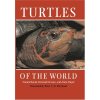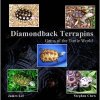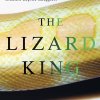Steve, Anthony, and Ben recommend a variety of books for your reference and reading pleasure worth adding to your own chelonian library.
If you love turtles, chances are you love reading about turtles. A library of references and resources at your fingertips is also important to help you care for the specific needs of your turtles and the potential illnesses and injuries that can occur over the years. With the purpose of giving you a good starting point to build your own chelonian library, and build your list leading up to the holiday season, we’ve decided to share with you some of our favorites you might wish to include in your library. Among them you’ll find those with thick layers of information, as well as some more suitable as field or identification guides. This list of books will combine to cover both natural history and care topics on a wide variety of turtle and tortoise species. They all have an important place in the turtle keeper’s library.
While this is far from a comprehensive list of the good resources out there, we feel it is a great starting point. We have also included a brand new, annual periodical, which we’ve had the pleasure of enjoying already. In the future, we plan to share more of our library with you. If there are books you enjoy and think we should add to our chelonian library, feel free to email us at [email protected].
Books
Turtles of the United States and Canada, 2nd Edition – Ernst and Lovich
 Turtles of the United States and Canada is the top reference for most North American species. This is not a care book, but a natural history reference. It is written to the academic end of the hobby and provides extensive detail (when available) on recognition, karyotype, fossil record, distribution, geographic variations, habitat, behavior, reproduction, growth, diet and feeding, predators and defense, and population demographics on every species known to North America. The academic nature of this book can make it a “tough” read, mainly due to the sheer volume of information. This 2nd edition has a number of added information and updates that make it worth the purchase, even if you have the original edition. The bibliography of this work has well over 5000+ entries and is itself an selling point. This book is the defining work on the subject and a must-have for any turtle-lover’s chelonian library, even if your studies aren’t currently focused on North American species.
Turtles of the United States and Canada is the top reference for most North American species. This is not a care book, but a natural history reference. It is written to the academic end of the hobby and provides extensive detail (when available) on recognition, karyotype, fossil record, distribution, geographic variations, habitat, behavior, reproduction, growth, diet and feeding, predators and defense, and population demographics on every species known to North America. The academic nature of this book can make it a “tough” read, mainly due to the sheer volume of information. This 2nd edition has a number of added information and updates that make it worth the purchase, even if you have the original edition. The bibliography of this work has well over 5000+ entries and is itself an selling point. This book is the defining work on the subject and a must-have for any turtle-lover’s chelonian library, even if your studies aren’t currently focused on North American species.
Turtles of the World – Bonin, Devaux, Dupre. trans. Peter C.H. Pritchard
 The value in Turtles of the World is as a field guide. While it lacks the extensive details on any species that are available elsewhere, this book covers every species known at the time of its publishing (2006). Included in the entry for each species is at least one photograph, a brief natural history, and a range map. Because it is 6 years old now, some of the taxonomy differs from what is currently accepted. Other taxonomy is different because of different thoughts on the topic. All-in-all, we feel this book fills a niche in our library and think it is a valuable addition.
The value in Turtles of the World is as a field guide. While it lacks the extensive details on any species that are available elsewhere, this book covers every species known at the time of its publishing (2006). Included in the entry for each species is at least one photograph, a brief natural history, and a range map. Because it is 6 years old now, some of the taxonomy differs from what is currently accepted. Other taxonomy is different because of different thoughts on the topic. All-in-all, we feel this book fills a niche in our library and think it is a valuable addition.
Terralog: Turtles of the World, Vol. 1-5 – Holger Vetter
 This set of 5 volumes occupies a place in the library that no other resource can match. These books are loaded with high-quality color photos (of both the animals and their habitats) and excellent range/distribution graphics. They are, essentially, academic picture books. No natural history information or care information other than general information though a symbol guide. They are fantastic aids in the identification of species, due to the volume of photographs included. Volume 4 (East and South Asia) even includes photographs of the many asian hybrids. The taxonomy is slightly out of date, and does not always follow the most familiar terms. The senior author uses his preferred taxonomic classification. The only negative is that some of the volumes do contain a number of errors, however, they are currently working their way through the volumes and creating updated and revised editions that should fix many of these mistakes. The second edition of Volume 1 (Africa, Europe, and West Asia) has already been released.
This set of 5 volumes occupies a place in the library that no other resource can match. These books are loaded with high-quality color photos (of both the animals and their habitats) and excellent range/distribution graphics. They are, essentially, academic picture books. No natural history information or care information other than general information though a symbol guide. They are fantastic aids in the identification of species, due to the volume of photographs included. Volume 4 (East and South Asia) even includes photographs of the many asian hybrids. The taxonomy is slightly out of date, and does not always follow the most familiar terms. The senior author uses his preferred taxonomic classification. The only negative is that some of the volumes do contain a number of errors, however, they are currently working their way through the volumes and creating updated and revised editions that should fix many of these mistakes. The second edition of Volume 1 (Africa, Europe, and West Asia) has already been released.
Health Care and Rehabilitation of Turtles and Tortoises – Amanda Ebenhack
 Health Care and Rehabilitation of Turtles and Tortoises is easily the most thorough and complete book on health care of turtles and tortoises, which makes it a must for any chelonian library. Beginning at the basics like diet and nutrition and moving through routine health checkups and treating major conditions (shell fractures, parasites, disease, rehab), this book will not let you down. It makes veterinary methods accessible and understandable to the average keeper, which can be important for those who do not have an veterinarian experienced with chelonians. This book is picture heavy and shows examples of almost every condition and treatment method you can think of. These pictures are important to help show the reader the techniques described in the text. Having Health Care and Rehabilitation of Turtles and Tortoises book at your fingertips should be a must for any keeper, particularly those dealing with a large quantity of animals.
Health Care and Rehabilitation of Turtles and Tortoises is easily the most thorough and complete book on health care of turtles and tortoises, which makes it a must for any chelonian library. Beginning at the basics like diet and nutrition and moving through routine health checkups and treating major conditions (shell fractures, parasites, disease, rehab), this book will not let you down. It makes veterinary methods accessible and understandable to the average keeper, which can be important for those who do not have an veterinarian experienced with chelonians. This book is picture heavy and shows examples of almost every condition and treatment method you can think of. These pictures are important to help show the reader the techniques described in the text. Having Health Care and Rehabilitation of Turtles and Tortoises book at your fingertips should be a must for any keeper, particularly those dealing with a large quantity of animals.
Keeping and Breeding Freshwater Turtles – Russ Gurley
 Keeping and Breeding Freshwater Turtles is one of the most recommended resources to new keepers and breeders. It is written in a style easy to read and easy to understand. This book covers any care topic in a complete fashion, and even covers the basics of health care and illness making it a great companion to Health Care and Rehabilitation of Turtles and Tortoises. Together, they are a dynamic duo covering the complete care of chelonians. We have found as we learn more, it becomes less useful, and some things are becoming out-of-date. These things aside, it is a fantastic resource for newer keepers and breeders. Just like the other books produced by Living Art Publishing, it includes a large quantity of color photographs which themselves make this book worth being in your library.
Keeping and Breeding Freshwater Turtles is one of the most recommended resources to new keepers and breeders. It is written in a style easy to read and easy to understand. This book covers any care topic in a complete fashion, and even covers the basics of health care and illness making it a great companion to Health Care and Rehabilitation of Turtles and Tortoises. Together, they are a dynamic duo covering the complete care of chelonians. We have found as we learn more, it becomes less useful, and some things are becoming out-of-date. These things aside, it is a fantastic resource for newer keepers and breeders. Just like the other books produced by Living Art Publishing, it includes a large quantity of color photographs which themselves make this book worth being in your library.
Diamonds in the Marsh – Barbara Brennessel
 Diamonds in the Marsh is the most complete natural history resource focusing solely on Diamondback Terrapins. The book inspects the biology, ecology, behavior, and historical and cultural significance of the Diamondback Terrapin. Also included are a number of color and black and white photographs detailing the native habitats of this species and a large bibliography to send you on to more reading about the Diamondback Terrapin. Sections of the book lean to a more narrative style than others. This blend of styles makes in a great resource for researches and also an attractive read to DBT enthusiasts.
Diamonds in the Marsh is the most complete natural history resource focusing solely on Diamondback Terrapins. The book inspects the biology, ecology, behavior, and historical and cultural significance of the Diamondback Terrapin. Also included are a number of color and black and white photographs detailing the native habitats of this species and a large bibliography to send you on to more reading about the Diamondback Terrapin. Sections of the book lean to a more narrative style than others. This blend of styles makes in a great resource for researches and also an attractive read to DBT enthusiasts.
Diamondback Terrapins: Gems of the Turtle World – Lee and Chew
 Diamondback Terrapins: Gems of the Turtle World is a small, but relevant book on Diamondback Terrapins. While it is not the most thorough resource on any one given DBT-related topic, it covers at least the basics of natural history topics, taxonomy details, descriptions of each subspecies, conservation, their place in herpetoculture (including the various “morphs”), and captive care, which is the largest focus of the book. The care section covers everything from habitat needs to health care and breeding information. Additionally, Diamondback Terrapins: Gems of the Turtle World includes many great photos that display the beauty of this species group. We recommend this book to anyone just getting into caring for Diamondback Terrapins.
Diamondback Terrapins: Gems of the Turtle World is a small, but relevant book on Diamondback Terrapins. While it is not the most thorough resource on any one given DBT-related topic, it covers at least the basics of natural history topics, taxonomy details, descriptions of each subspecies, conservation, their place in herpetoculture (including the various “morphs”), and captive care, which is the largest focus of the book. The care section covers everything from habitat needs to health care and breeding information. Additionally, Diamondback Terrapins: Gems of the Turtle World includes many great photos that display the beauty of this species group. We recommend this book to anyone just getting into caring for Diamondback Terrapins.
Life in a Shell – Donald C. Jackson
 The manner in which many of the quality turtle references are written can be tough to follow if you are not used to scientific publications. Donald C. Jackson does a wonderful job of taking his decades of laboratory experience and putting it into understandable language that is sure to spark the interest of anyone who has every looked at a turtle. Jennie Erin Smith, the author of “Stolen World” wrote in her review of the book “So how do turtles survive under frozen lakes for months?” This is the central question of this book and one that Mr. Jackson has spent a career trying to answer. Those two short sentences do a stellar job summing up this book as well as Mr. Jackson’s lifetime of experiments. This book is sure to prove that turtles are among the most amazing vertebrates on the planet, with scientific backing that the general public can enjoy.
The manner in which many of the quality turtle references are written can be tough to follow if you are not used to scientific publications. Donald C. Jackson does a wonderful job of taking his decades of laboratory experience and putting it into understandable language that is sure to spark the interest of anyone who has every looked at a turtle. Jennie Erin Smith, the author of “Stolen World” wrote in her review of the book “So how do turtles survive under frozen lakes for months?” This is the central question of this book and one that Mr. Jackson has spent a career trying to answer. Those two short sentences do a stellar job summing up this book as well as Mr. Jackson’s lifetime of experiments. This book is sure to prove that turtles are among the most amazing vertebrates on the planet, with scientific backing that the general public can enjoy.
Lizard King – Bryan Christy
 Exotic reptile smuggling is detailed, through the lives of both smuggler and the law enforcement personnel that aim to put a stop to it. The Van Nostrands of Strictly Reptiles are the focus of the book, and Christy does a wonderful job illustrating the reptile lover’s need to collect rarer, never before seen specimens. Mr. Christy even took a job cleaning cages at Strictly Reptiles to learn more about the reptile industry and shares with readers that Strictly Reptiles brought Green Iguanas to the United States for the first time, and in doing so in large numbers, is greatly responsible for their abundance and availability here today. Like “Stolen World,” this book also details the exploits of some of rarest turtles and tortoises in the world.
Exotic reptile smuggling is detailed, through the lives of both smuggler and the law enforcement personnel that aim to put a stop to it. The Van Nostrands of Strictly Reptiles are the focus of the book, and Christy does a wonderful job illustrating the reptile lover’s need to collect rarer, never before seen specimens. Mr. Christy even took a job cleaning cages at Strictly Reptiles to learn more about the reptile industry and shares with readers that Strictly Reptiles brought Green Iguanas to the United States for the first time, and in doing so in large numbers, is greatly responsible for their abundance and availability here today. Like “Stolen World,” this book also details the exploits of some of rarest turtles and tortoises in the world.
Stolen World – Jennie Erin Smith
 The growth of the hobby known as herpetoculture is detailed through the adventures of two well known pioneers in the reptile community. Hank Molt and Tom Crutchfield brought many of the reptiles that are common place in the industry to the United States for the first time. Both men dealt in all reptiles, including some of the rarest turtles and tortoises in the world. The book becomes difficult to put down as the story progresses and unfolds. There are differences between the two reptile smuggling books, the other being the “Lizard King,” since one focuses more on the hobby and the other the pursuit of smugglers by law enforcement.
The growth of the hobby known as herpetoculture is detailed through the adventures of two well known pioneers in the reptile community. Hank Molt and Tom Crutchfield brought many of the reptiles that are common place in the industry to the United States for the first time. Both men dealt in all reptiles, including some of the rarest turtles and tortoises in the world. The book becomes difficult to put down as the story progresses and unfolds. There are differences between the two reptile smuggling books, the other being the “Lizard King,” since one focuses more on the hobby and the other the pursuit of smugglers by law enforcement.
Magazines and Periodicals
The Tortoise
 The new, annual magazine of The Turtle Conservancy, The Tortoise, is a fantastic publication focused on species in dire need of conservation. The inaugural issue covers many fascinating species: Ploughshare Tortoise, Bolson Tortoise, Pacific Pond Turtles, Geometric Tortoise, Mexican Spotted Wood Turtle, Forsten’s Tortoise, Sulawesi Forest Turtle, and others. There are many high-quality photographs included, as well. The Tortoise is not an academic journal, but rather a publication focused on these amazing creatures, the challenges they face to survive, and the people coming to their aid. This publication can be gotten with a membership in the Turtle Conservancy. Allen Salzberg’s Herp Digest also has a number of these available.
The new, annual magazine of The Turtle Conservancy, The Tortoise, is a fantastic publication focused on species in dire need of conservation. The inaugural issue covers many fascinating species: Ploughshare Tortoise, Bolson Tortoise, Pacific Pond Turtles, Geometric Tortoise, Mexican Spotted Wood Turtle, Forsten’s Tortoise, Sulawesi Forest Turtle, and others. There are many high-quality photographs included, as well. The Tortoise is not an academic journal, but rather a publication focused on these amazing creatures, the challenges they face to survive, and the people coming to their aid. This publication can be gotten with a membership in the Turtle Conservancy. Allen Salzberg’s Herp Digest also has a number of these available.


